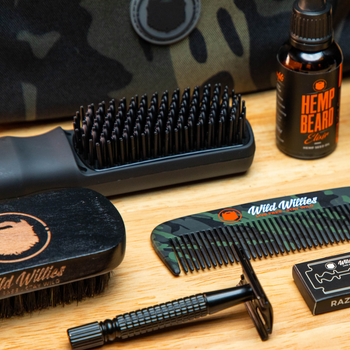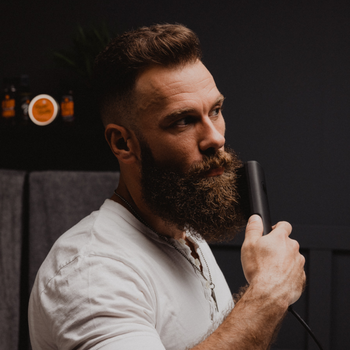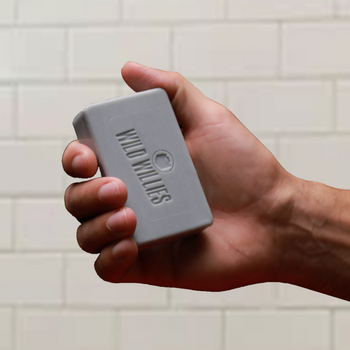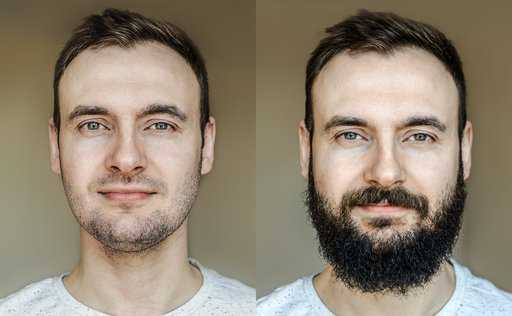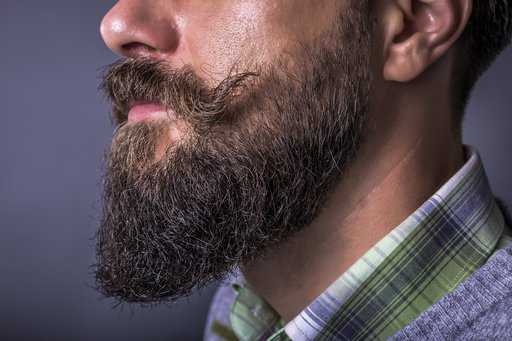For a lot of men out there with a patchy mustache or beard, growing facial hair that you can really be proud of seems like a distant dream. In the face of beard growth problems, many men simply give up.
Fortunately, innovations in health science and technology are giving us new insights every year into how the human body works, and how to best combat frustrating problems like thin or patchy facial hair.
One potential solution that more and more men are testing out is minoxidil. All across the internet, from chat forums to YouTube to social media, discussions are occurring. Many men claim that minoxidil has the capacity to stimulate facial hair growth and help bolster the beards of men who have long struggled with patchiness, thin growth, an irregular pattern, or any number of other beard-related problems.
However, opinions are mixed. While some men swear by the usefulness of minoxidil as a beard treatment, others are wary of too much hype—as well as potential side effects. What’s more, some medical professionals warn of the dangers of off-label product usage.
So what do we really know about minoxidil? Is it really the miracle beard treatment that some think it is, or is it just a passing fad? It’s time to find out.

What is minoxidil?
Minoxidil is the only baldness prevention treatment that is both available over the counter and approved by the FDA (for use on the scalp). It has been marketed using a wide variety of brand names, but you probably know it best as the active ingredient in the common anti-baldness treatment, Rogaine. Rogaine uses a solution of 2% or 5% minoxidil to stimulate hair growth in men suffering from male pattern baldness, as well as some women. For treatment of baldness on the scalp, it is effective for around 2 out of 3 men.
How does minoxidil work?
Strangely enough, minoxidil’s use as a treatment for baldness was discovered while it was being tested as a blood pressure drug. The biological mechanism that minoxidil uses to help hair regrow is, in fact, the same one that makes it useful for high blood pressure. In essence, minoxidil reduces constriction in blood vessels. This widens them, which lowers blood pressure, but also allows more oxygen and nutrients to circulate in the bloodstream. This extra nourishment plays a key role in stimulating healthy hair growth.
Unfortunately, minoxidil’s effects on head hair are temporary, in the sense that as soon as you stop applying it, you will begin to see the baldness returning. Whether or not this is true of facial hair grown with the help of minoxidil is unclear, but it is certainly possible. More studies will have to be done in order to completely understand the uses of minoxidil as a beard growth stimulator.

Is a minoxidil beard treatment safe?
The safety of minoxidil as a beard treatment is up for debate. This is not because there have been reports of dangerous side effects, but simply because not enough research has been done on the topic to say with any certainty that minoxidil is definitely safe for use on the face.
Representatives of companies with products that use minoxidil, such as Rogaine, will insist that the product be used solely on the top of the head, as indicated in the instructions that come with the product. This is mainly because the FDA has not approved minoxidil for use anywhere else, and its effects, both good and bad, are not entirely understood.
This means that any use of the product on a part of the body other than the head constitutes what is known as “off-label” use. Going off label is basically whenever you use a medicine or hygiene product in a way that is not listed in the product’s instructions label. While this isn’t inherently unsafe or unethical, it can lead to unforeseen consequences, since doctors and other experts may not know what the potential results will be.
We will discuss safety in a bit more detail once we get to the section about side effects.
What kind of results can I expect from minoxidil?
As more and more men try minoxidil as a beard growth supplement, we are beginning to get a clearer picture of the real effectiveness of the drug. The results are mixed, and the reality of minoxidil’s effectiveness for beards is rather complicated.
In short, minoxidil can be moderately effective in promoting beard growth. For the best explanation of what minoxidil will do for your beard growth, let’s see what scientists have discovered.
Has there been any study correlating minoxidil and beard growth?
A study released in 2016 by the Japanese Dermatological Association tested the usefulness of minoxidil 3% solution for beard growth. What they found was that test subjects who used minoxidil had significantly stronger results than those who took a placebo.
However, they also noted that minoxidil did not actually cause any hairs to thicken in diameter. Additionally, minoxidil did not seem to be causing any vellus hairs (aka peach fuzz, or the shorter, flimsier hairs that cover much of your body) into terminal hairs (the thick hair characteristic of fully developed facial and body hair).
Instead, the main effect of the minoxidil applied to the beard was to increase the number of vellus hairs, and moderately thicken those vellus hairs without transitioning them to full terminal hairs.
What this says about the long term effectiveness of minoxidil is unclear. Researchers are still uncertain as to whether new hair produced by minoxidil use on the face is likely to remain after ceasing application, or whether some or all of it can remain.

What are some common minoxidil beard side effects?
As far as we can tell with the limited research that has been done concerning the side effects of minoxidil for beard growth, the potential reactions are the same as would be expected when using it on the head.
As we mentioned before, minoxidil was first used as a blood pressure reducer, because of its ability to dilate blood vessels. For this reason, it can cause low blood pressure in people who have normal blood pressure to begin with. This can lead to lightheadedness and dizziness, and in serious cases fainting, swelling of the extremities, and chest pain. While these side effects are not particularly common, they are serious enough to warrant a consultation with your doctor before you begin to use minoxidil.
Other potential side effects stem from potential irritation when applying minoxidil topically to the skin. For example, some people report itchiness or swelling at the site of application. In rare cases, a severe allergic reaction to minoxidil can occur, resulting in breathing difficulties, extreme dizziness, and other potentially life-threatening reactions. For this reason, we emphasize the importance of consulting a doctor before beginning use of minoxidil.
A less serious but more common side effect that some report is excessive growth of hair, or hair growth in unwanted places.
Ultimately, serious side effects of minoxidil tend to be rare. However, it is important to keep in mind that minoxidil is a medicine, and should be used with the necessary caution.
Alternative choices for stimulating beard growth
If you are looking for other ways to improve your beard, there is a wide variety of approaches. Here are a few of the most popular ways that men naturally enhance their beard growth:
Healthy diet: Don’t underestimate the power of healthy eating. Just like muscle, your beard isn’t going to ever reach its maximum potential fed by junk food or cheap snacks. The common saying, “you are what you eat,” applies just as much to your beard as the rest of your body. Your hair is built from the nutrients you consume, and a healthy beard needs protein, fat, and plenty of vitamins in order to thrive. Fish, fresh fruits and vegetables, whole grains and nuts should all be incorporated into a beard-friendly diet.
Regular exercise: Testosterone is one hormone that stimulates facial hair growth. While some (particularly older) men take testosterone supplements for a variety of reasons, it is important to keep in mind that your body can naturally produce plenty of testosterone with the right stimulation. Cardio, weight training, and just about any other form of exercise can increase your body’s testosterone production capacity.
Natural beard growth supplements: There are also beard growth products available which, unlike minoxidil, are composed of 100% natural ingredients. These all natural beard growth products can help boost your beard by nourishing it with natural caffeine, biotin, and vitamins. This may be the best compromise if you are looking to try a beard growth product but are unwilling or unable to deal with the cost and potential side effects of a drug like minoxidil.
High quality, affordable beard products available at Wild Willies
Growing a healthy beard is only a part of the process. The other piece of the puzzle is keeping it clean and well groomed. For all of your other beard-care needs, visit Wild Willies online shop today and browse our wide selection. If you see something you like, have it shipped directly to you for a reasonable price. Happy shopping!

